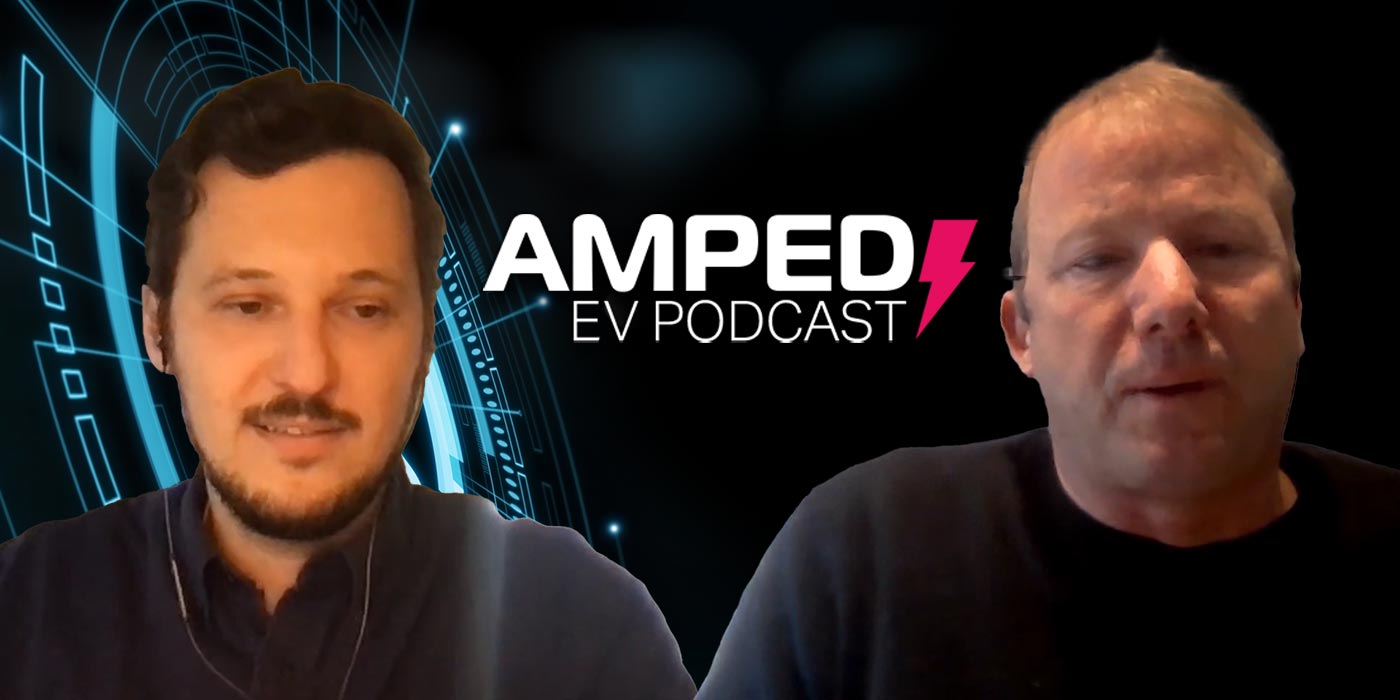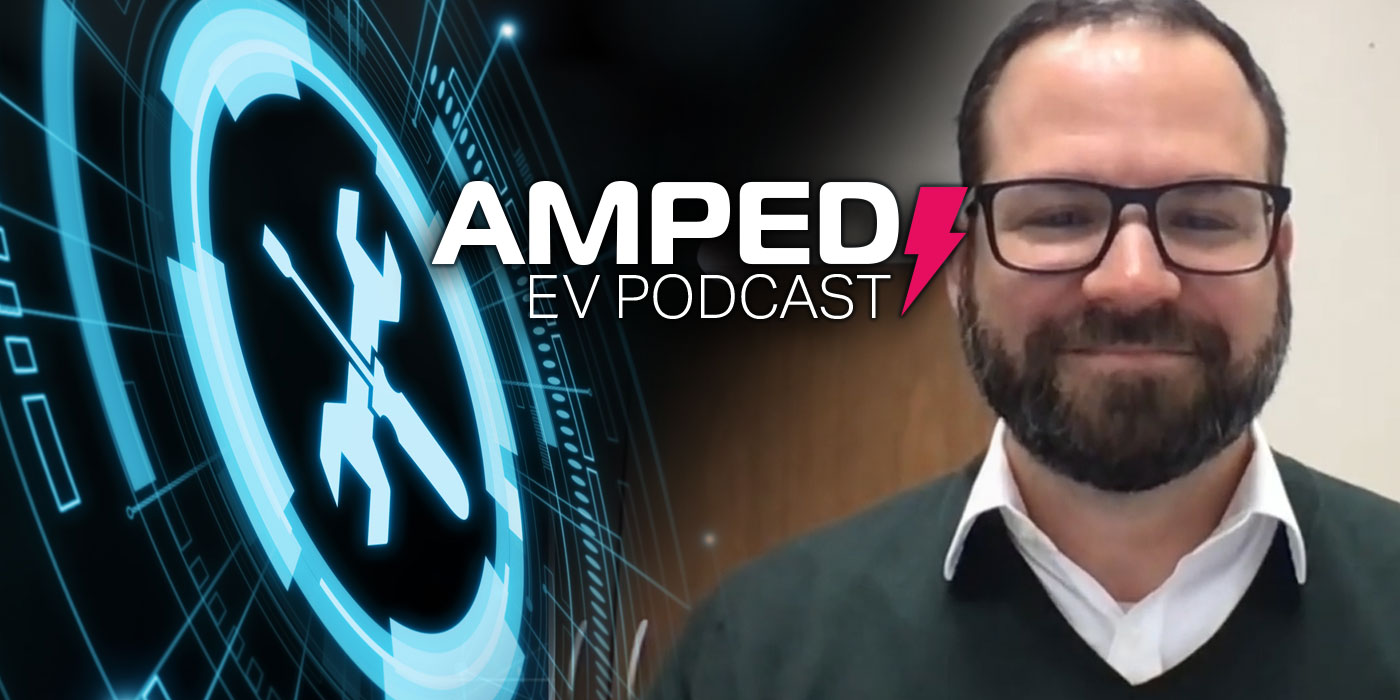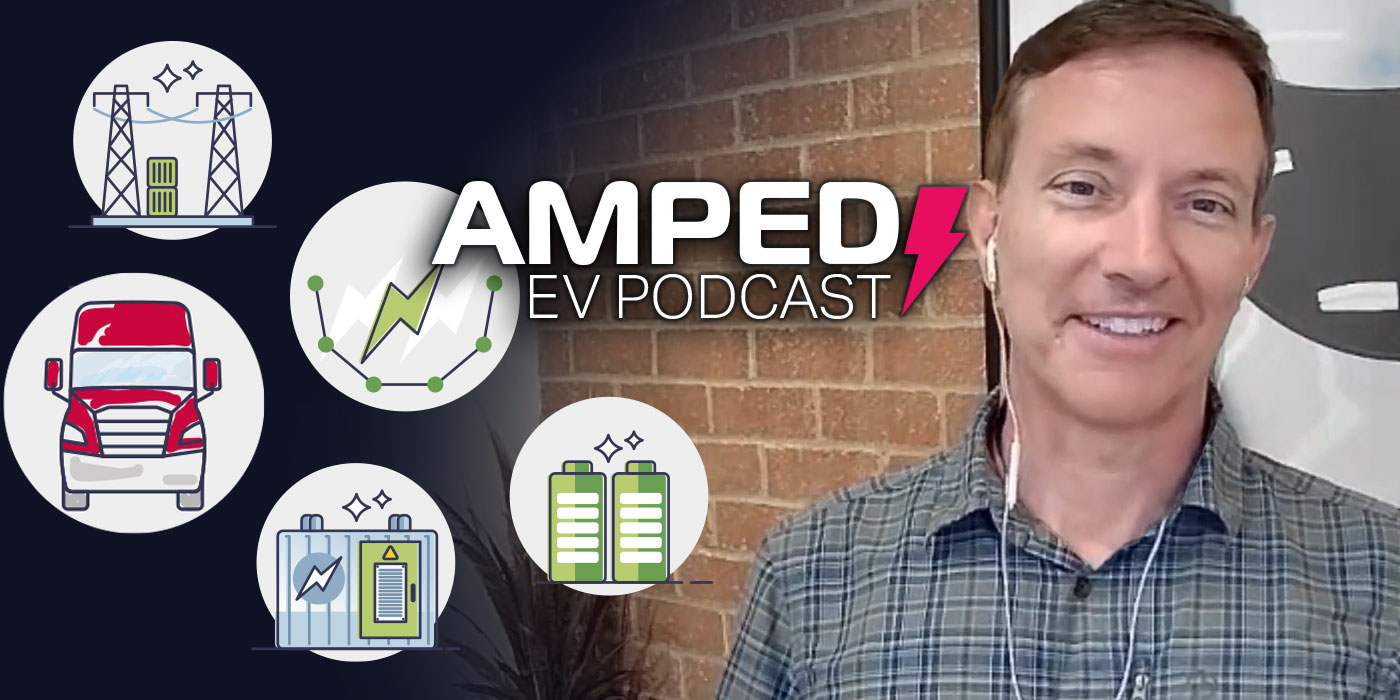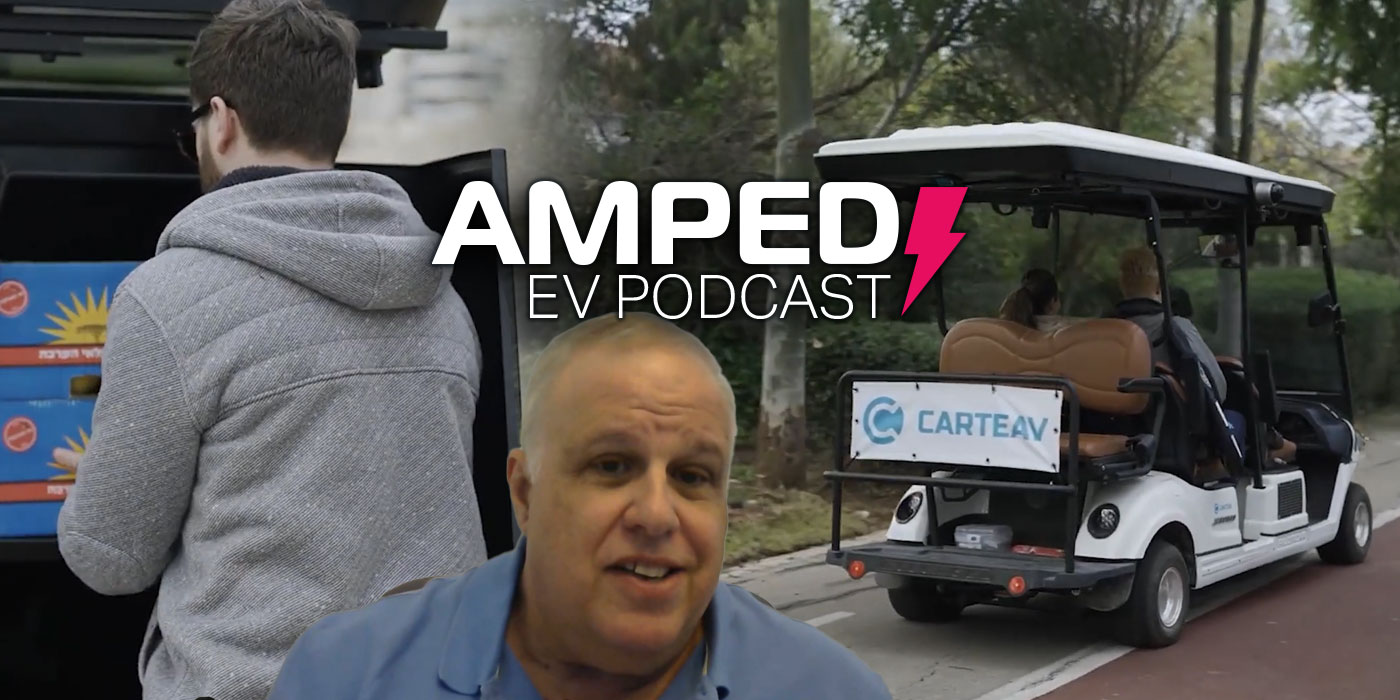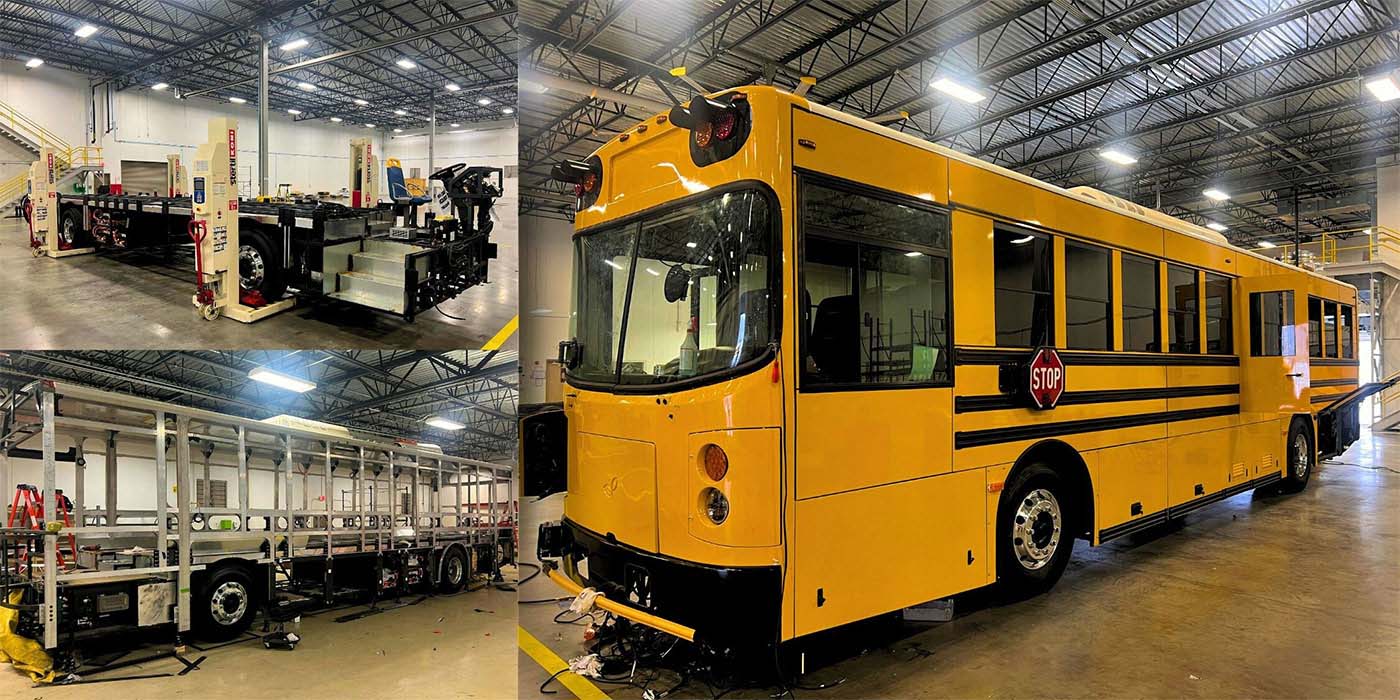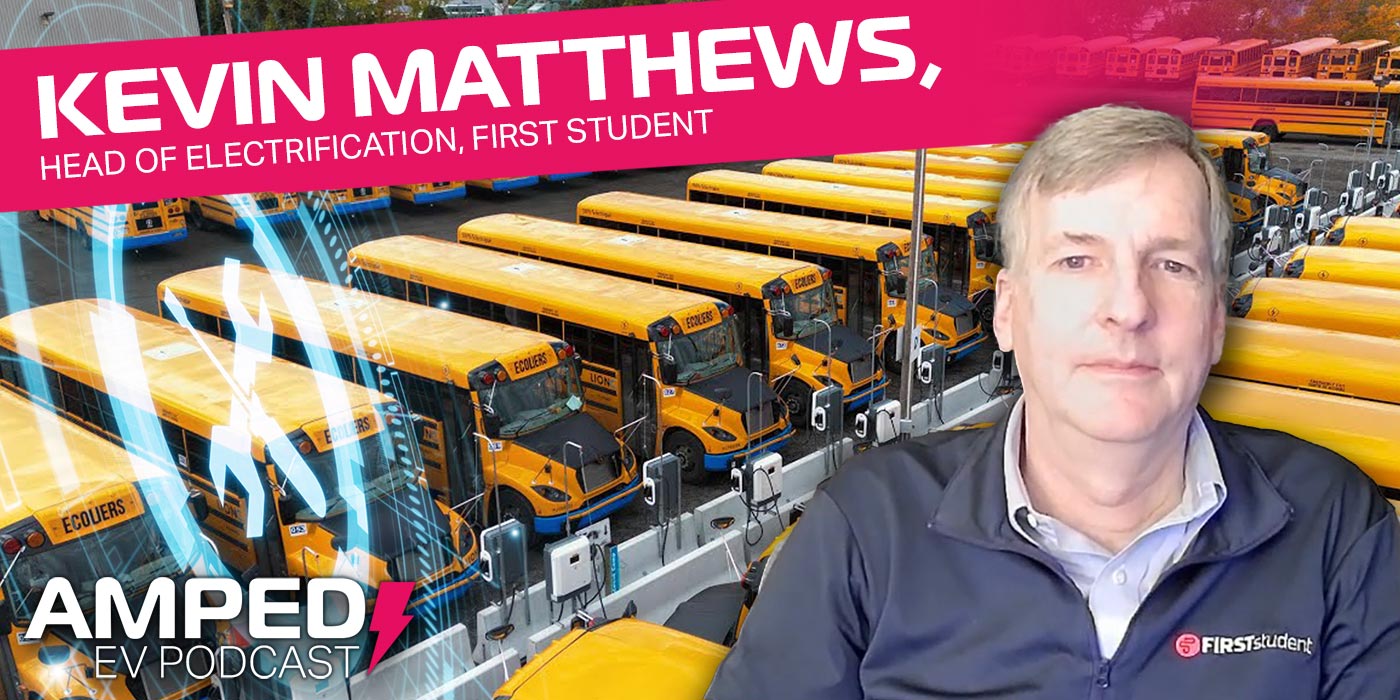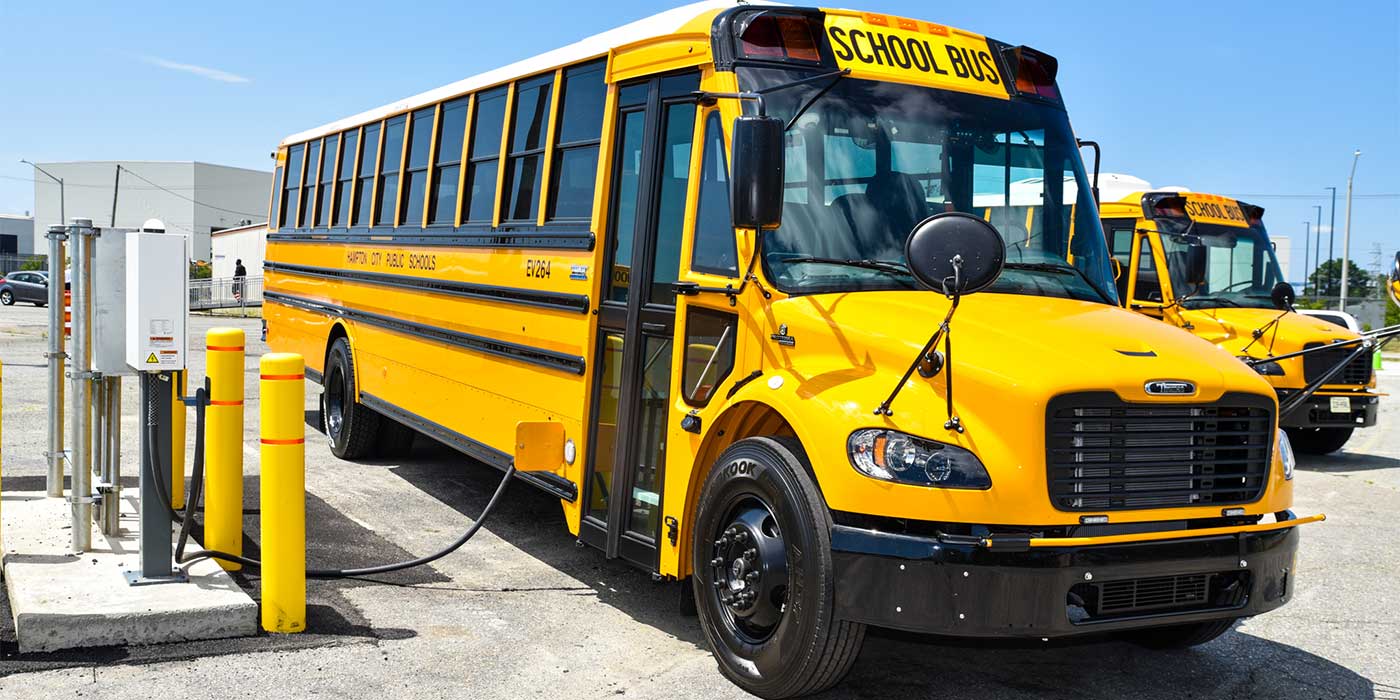Hearing a lot about electric school buses lately? That’s no coincidence. Last year, the EPA announced the Clean School Bus Program, offering a $5 billion investment for low-emission school buses over the next five years, and the EPA says it will make another $1 billion available for clean school buses in the 2023 fiscal year. Yes, electric school buses and the infrastructure to support them are a massive investment, but school districts around the country with an appetite for electrification know there may be no better time to take the plunge.
Many of those school districts are relying on their OEM partnerships to make the transition from diesel to electric. According to Arjun Nair, manager of electric vehicle programs at Thomas Built Buses, a successful electric bus rollout takes much more than district stakeholders being knowledgeable about just the vehicles themselves.
“For a customer to go through this transition, we definitely want to help the customer understand what they have to consider before they get along on this journey. We try to educate the customer about the product and about what are the other factors they need to be successful, then we have our resources, our experts within the company, who would help them evaluate their needs more specifically and suggest the options that they have to mitigate any of the challenges that they see,” Nair says.
On this episode of The Amped EV Podcast, Nair joins us to explain more of the reasons electric buses are catching on, the advantages of electric school bus adoption, identifying the best routes for school bus electrification and why designing an electric school bus is a challenge like no other.
Want more Amped EV podcast? Click here.
Here’s a transcript of the show:
David Sickels: Hello and welcome back to The Amped EV Podcast. My name is David, and I am the editor for The Buzz.
Nadine Battah: I’m Nadine, and I’m the editor of TechShop.
David Sickels: We have a fun guest today: Thomas Built Buses. What we’re talking about here are electric school buses.
Nadine Battah: I love talking about electric school buses. I feel like we always have such great conversations.
David Sickels: It’s cool because there are these different restrictions that come along with building an electric school bus that you’re not going to find in a consumer car or even a heavy-duty truck. It’s its own thing. I get excited for these districts. I’ve worked for a newspaper for a long time, and I would cover these school districts, and they’re all about saving that green. It’s so much fun to see this evolving, so today we are talking with Arjun Nair. He is the manager of the electric vehicle programs at Thomas Built Buses, and he’s going to tell us all about these buses, how they work, how infrastructure works and how they help school districts get started with electric school buses.
Nadine Battah: I am very excited, David. Let’s go ahead and get started.
David Sickels: Arjun, thank you so much for joining us today. I really appreciate you being here. Tell us a little bit about yourself and how you got started with Thomas Built Buses, and then I also want to ask you where you are seeing the demand for electric buses right now.
Arjun Nair: First of all, thank you for having me here. I started at Thomas in 2019 when the electric school bus program was put together. I’ve been in Daimler for 16 years now, have done different, say, types of work at Daimler, started off as a graduate engineer, did my initial years in the service side of the automotive business and then, probably around eight, nine years back, started with more emerging tech and setting up products and services associated with it.
Since I started the Thomas Built Buses on the electric school bus program, it was all about, hey, it’s not just a product, but it’s about making sure that the industry can rely on us to transition to electric, and that’s been a focus. Of course, the product is something we have done for several years, we’ve been doing for several years, so that was a lot more clear path, but everything besides the product has been a learning for us as well.
With regard to the demand for EVs in the last four years, the trendline is definitely showing that the electric school bus space is growing and the market for electric school buses are I would say very ripe at this moment. There’s been a lot of external factors that have aided in this growth. Initially, there were several funds available from sources like the Volkswagen Mitigation Trust. Last year, EPA announced the Clean School Bus Program where a lot more federal funding is now made available for school buses. Specifically, the Clean school bus program is offering $500 million a year dedicated to electric school buses for five years, and there’s another $500 million per year which can be shared with electric and other alternative sources, so there’s a lot of external factors that are helping the market demand which helps customers switch to electric easier.
David Sickels: How do the decision makers at a district decide, ‘okay, I think it’s time to pull the trigger on this’? Where do they get started? Is there anywhere they can go for help?
Arjun Nair: From the journey of a customer, I think, first and foremost, there are a few inhibiting factors when a customer wants to get into EV. First and foremost is the knowledge level or the understanding of what an EV is and what it takes to actually own and operate an EV. Another factor is the high investment needs upfront or a cash flow requirement to make sure you can buy an asset that is more expensive than a diesel vehicle or a gasoline vehicle and also set up the infrastructure or the ecosystem around the EV that is needed for a successful rollout. These are some of the challenges or pain points.
For a customer to go through this transition, we definitely want to help the customer understand what they have to consider before they get along on this journey. We try to educate the customer about the product and about what are the other factors they need to be successful, then we have our resources, our experts within the company, who would help them evaluate their needs more specifically and suggest the options that they have to mitigate any of the challenges that they see.
Nadine Battah: That’s great, and it’s excellent to hear that you’re going over the different options to consider to be successful with your customers. Are you seeing any patterns regarding the types of school districts that are interested in converting their fleet to electric buses? For example, are they more rural versus city or concentrated in certain parts of the country?
Arjun Nair: I would say the school districts now in general have a better understanding of the opportunities that are there to go EV. They are also learning about the benefits of going EV. The general information or knowledge level on EVs and the benefits of EVs is better. It is more about which school districts have that, say, an evangelist who wants to go EV, who wants to make sure that they want to be a pioneer, and that is then going to be aided by the support from the county or others in the district, what sort of operating model that they have or ownership model that they have. There are a lot of other factors that come into play here.
Of course, there are pockets or areas where the interest is high. There are other areas where I would say school districts are interested to know more, but maybe not at a point where they want to take that journey themselves. It is quite widespread. It’s very much dependent on the access to funds for going EV and what level of support these schools have from other stakeholders because now, for an EV, you need to think of what your utility is thinking about them going to EV, what support do others in their area have for, say. Electrification, so there are a lot of other factors that have to be considered.
David Sickels: In your experience, has it been a simple process or a difficult one or somewhere in between to get the buy-in from some of those stakeholders like the utility?
Arjun Nair: I think it is not a difficult process, but it is important to have the right discussions with the right stakeholders at the right time. For example, if you’re getting an electric school bus let’s say in a few month’s time, if you’re already too late talking to a utility because you’re talking about different industries that have different protocols, different processes and different lead types for them to get their work done, so it is extremely important to know what is the best way to approach your transition to EV. In some cases, the utilities may have programs that are ready to help you with an EV transition, whereas in some cases it may not be. It’s important to know what you have to do in order to get everything done in time so that, when you have a bus, you have a charger there that is ready to function.
David Sickels: Got it. Got it, and then I know that every district is different, so they’re going to have different needs, but, in general, have you seen that it’s better for the district to maybe just dip their toe in the water a little bit with it, maybe just replace one or two of their existing diesel buses or is it better for them to just go all in at once, replace the whole fleet and now they’re all electric?
Arjun Nair: I would say, first and foremost, EVs, specifically where the technology is for school buses, approximately 80% of school bus routes across the country are going to fit well for electrification because they run, more or less, less than 80 miles a day. The electric school buses have enough capacity to support a daily route with just one charge. Now, in Vento, you might need to do a top-off just to make sure that you can get the additional heating that you need.
With that said, it’s important to identify what those routes are that are best suited for electrification. It is better to look at your fleet and determine the ideal routes, the ideal buses that can be electrified and then explore that with maybe one or two vehicles or a handful of vehicles so that you understand what are the factors that are critical for being successful in rolling out electric vehicles. There’s going to be a lot of training that is needed.
That overnight change to the entire fleet will be a bigger challenge, not that it cannot be done, but it is going to be, say… The rollout is going to be at a massive scale, so you will have to have a lot more planned rollout or training efforts. Even investment is going to be quite big. If a school district has a fleet of, just for discussion, say, 10 vehicles, going with two or four vehicles at first maybe for a year would be a great way to enter this transition because then your team will have, first, experience with the vehicles, will have a good understanding of what they should do in order to be successful, and then scaling can happen.
Nadine Battah: Very nice. Of course, these EVs need to be charged to just run. How does a district decide the right charging hardware and software for its situation? Do you guys help them on the infrastructure side?
Arjun Nair: Absolutely. Just maybe a back story here, when we started the Jouley school bus journey, which is our electric school bus, we had to go through that learning curve where we knew that we need charges, but getting the charger, say, our charging station set up in the plant was a learning in itself because we just assumed that, okay, we just ordered charges and put them in, but it’s not that easy. We had to work with the utility.
We need to make sure that we have the right charger for the number of vehicles that we were planning to produce. We have the plan to add more charges per year which are in line with the ramped up production, so that gave us a lot of exposure to some of the challenges that the industry is going to face when it comes to electrification, and that’s where we designed our Electric school Bus Authority which is looking at this transition from a 360-degree view. We said, hey, for a successful electrification there is going to be the ecosystem that has to be set up accurately, and that is where Electric School Bus Authority is focused, making sure that we can help customers along these different aspects.
We always start by asking the customer what their vision for electrification is and, based on that, we also look at their fleet size, their routes and identify what are the best routes to be electrified and what type of charging infrastructure they would need for that. We also take into consideration their future requirements because, when you talk about infrastructure and when you work with the utility to, say, add capacity on a site for charges, you need to try and future-proof it. You don’t want to do that every year.
We try to understand a customer’s strategy with regard to electrification when they say, “I’ve got a fleet of 50. I will go with five now, but I do want to get to 50% of electrification in the next, say, five years.” If that is the boundary condition that we have, then we look at what is the best approach to upgrading your infrastructure and also what charge or mix of chargers do you need to support your year-one operation and also your future growth. That is one way of making sure that your investments are best utilized and also you get all the stakeholders together so that this is future-proofed.
David Sickels: Got it. When it comes to maintenance here, I’m sure most districts have someone that they’re going through for their diesel buses to maintain those buses. Is there any overlap that they can possibly keep going to the same person? Do they need to find a whole new maintenance method? How does the difference in maintenance work from what they’re used to what they’re moving into?
Arjun Nair: In general, from a maintenance comparison standpoint, EVs should have fewer planned maintenance because of having lesser moving parts. However, the basic skills that a technician needs to perform that maintenance are going to be different. Hence, there’s a lot of retraining and retooling that is needed to make sure that your workforce can address an EV.
Traditional models that schools have are probably not going to change. For schools that have their workforce to do maintenance work, we want them to be retrained so that they can do the work. However, one big factor to consider is the high-voltage safety. We’re very clear about setting the highest safety standards not just from a design, but also from a procedural standpoint, so we have set up within our company, within DTNA and the bigger Daimler Truck organization, automotive high voltage safety organization. This is a group of experts who determine, say, how processes should be designed or how even systems should be designed to make sure that we have the highest safety standards when it comes to high voltage.
One approach that we have taken is we’ve got different levels of high voltage safety training which are applicable to drivers, which are applicable to customers as well as technicians. A driver need not know the technical details of each system, but they should know some basic level of information that helps them understand what are the differences between an EV and another vehicle and what should be their approach towards an EV. We have these different training levels. For a technician though, it is extremely important that they have a very good understanding of what they can do and what they can’t do.
If you have an orange cable, which is high voltage, you probably want to be very careful when you are working around it. You don’t want to use power tools next to high-voltage components. If you have to do such work, there are certain protocol setups where you have to make sure the vehicle is decommissioned or the battery is disconnected such that it is safe to work. We make sure we have these processes in place, these trainings and certifications in place so that the technicians are now able to work safely, and then there’s, of course, other technical training that is given to our dealers to make sure that they can support the product.
Nadine Battah: Very nice. Now we wanted to briefly go over how you guys are working with Proterra to design the battery system for your electric school buses. What makes designing a battery pack for a school bus unique when compared to a passenger car or commercial truck?
Arjun Nair: Yes, Proterra is our partner, our powertrain partner, and we use their batteries. One of the biggest differences from a school bus to, say, a passenger car or a commercial vehicle would be, especially the largest school buses, there are some design constraints that we put in. When we developed the vehicle, we wanted to make sure that we were packaging the batteries within or right below the frame rails just because we wanted to make sure that it is in one of the safest areas of the vehicle, provided there was a crash or anything.
Also, another design constraint that we put was to make sure that all the high voltage components are also constrained within the frame rails or within the so-called engine bay area or, in our type C school bus, the Jouley, it’s underhood where we have a lot of the high voltage components, and all the high voltage cables are routed within the frame rails. That was something that we took into consideration while designing the school bus.
Now, for a truck or for a car, they may not have the same type of design constraint set. Of course, one of the biggest challenges for commercial vehicles would be the weight of the battery. Actually, it is one for all applications, specifically commercial vehicles because it is going to come at the cost of payload. With regards to school buses, since we are focused not on the weight capacity that we can carry, but more on the number of students and the safety of the students, I think we have a bit more flexibility when it comes to the added weight that the battery would break.
David Sickels: Well, that’s cool. Well, yeah, that’s something that I wouldn’t have really thought of, that it’s not so much about payload, it’s about the number of students that you’re able to transport at one time.
Arjun, this has been great. I really appreciate you sharing your knowledge with us here. School buses are a really fascinating area for me personally as far as EVs are concerned and seeing how demand there is growing and just seeing the interest level rise. It’s a lot of fun, and I just really appreciate your time here and filling us in on everything you’ve got going on.
Arjun Nair: Thank you. Thank you for the time.
David Sickels: Absolutely. Absolutely. Well, thanks for joining us and take care. Okay. That was a fun interview.
Nadine Battah: That was a lot to cover, but I really enjoyed that.
David Sickels: There’s a lot to it. What was your big takeaway?
Nadine Battah: I think I really appreciate the fact that the company is doing so much to help the school districts be successful. They lay it down where they have to see what they need to consider to be successful and they help determine that alongside with the schools. It’s not like the school is just dealing with this on their own. They have support through and through, so I really appreciated that.
David Sickels: Every district is different. They’re all going to have their own kind of electrification journey here, so having that sidekick, somebody standing by you to help guide you through it, that’s super helpful. One thing that he said that really stuck out to me, they had the exposure to needing to install that infrastructure themselves. Before they even started to help these school districts, they had to go through different headaches or figure out the different things that were going to stop a school district from having to do this.
Working with the utilities, we’ve heard that plenty of times before, if you don’t get started early, if the communication isn’t there, it can be difficult. As he said, get started with that early. Have somebody to help usher you through that process. It’s going to go smoothly for you, but if you wait too long or you’re just not communicating with the right stakeholders there, you might have a bad time.
Nadine Battah: It’s not something that can happen overnight, but just realize that you have that team to help you and assist you through that. I think that’s really important for a lot of these school districts.
David Sickels: Absolutely. My other takeaway that I did want to mention was just the design constraints of the electric school bus I hadn’t thought about. It’s not so much about payload. These kids, they’re light.
Nadine Battah: Right. Right.
David Sickels: I don’t know.
Nadine Battah: They’re little chaps.
David Sickels: Exactly. It’s not so much about, okay, how much weight can I carry? It’s about how many students can I safely put onto this vehicle, get them home safely, get them to school safely and thinking about those things, thinking about where they’re putting the battery, just these little interesting details that you’re not having to think about quite as much or quite in the same way as with other vehicles. I thought that was really interesting. It’s really fun to learn about.
David Sickels: Well, thank you guys for joining us, and we’ll see you next time.






